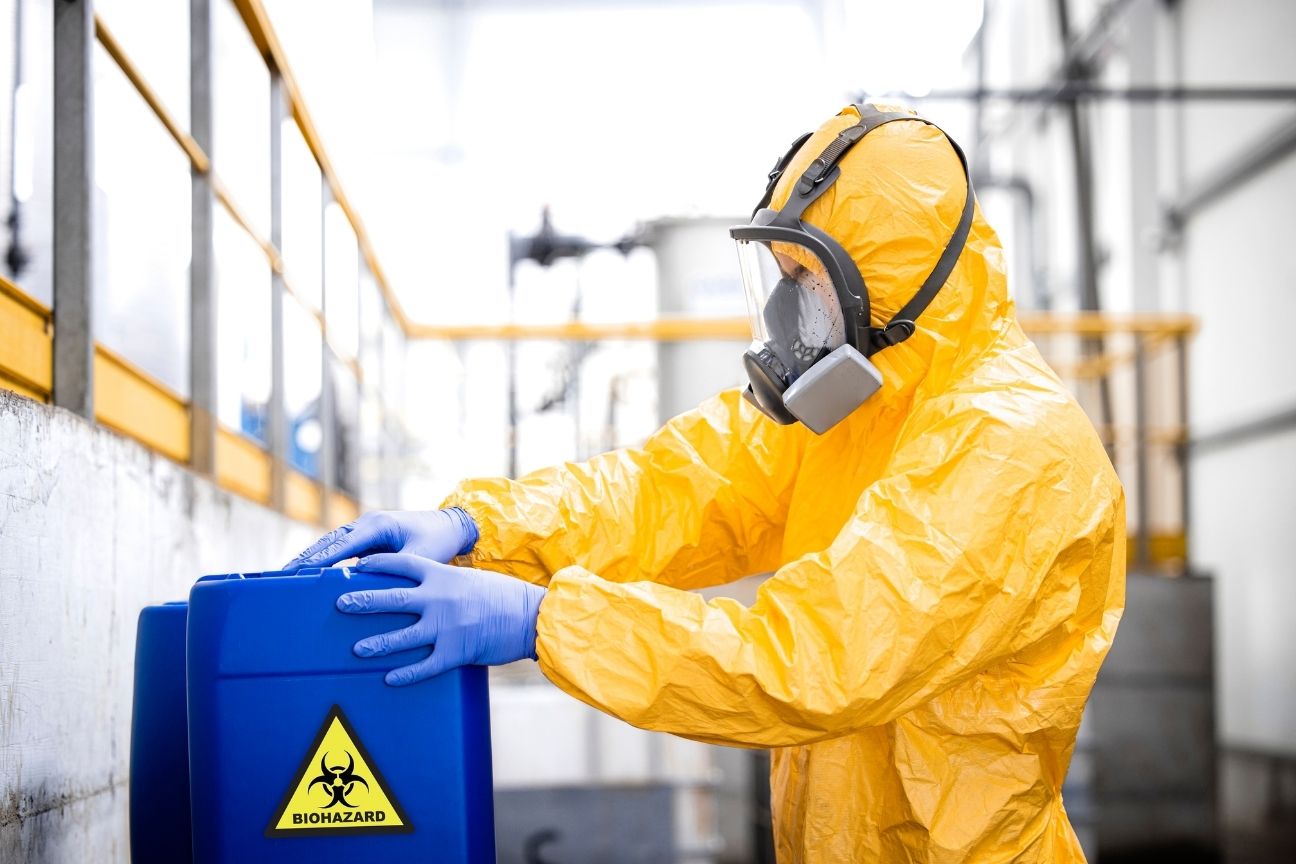Chemical waste hauling is more than just a logistical necessity; it involves understanding complex regulations, safety measures, and environmental implications. Often sidelined in broader waste management discussions, this topic contains hidden insights that can benefit businesses, regulators, and environmentalists alike. Here’s a comprehensive guide where we uncover those lesser-known aspects.
Introduction
Chemical waste hauling plays a crucial role in modern waste management. It involves the careful collection and transportation of chemical waste, which includes potentially hazardous materials. Understanding this process is essential not only for businesses but also for the well-being of the environment and public health.
Many people overlook the complexities behind chemical waste hauling. It goes beyond simple logistics; it encapsulates regulation, safety, and environmental concerns. Uncovering the hidden insights in this field can significantly aid businesses in improving compliance and efficiency. Furthermore, regulators and environmentalists benefit from a deeper understanding of how chemical waste impacts both health and the ecosystem.
Consider this: each year, millions of tons of chemical waste are generated across various industries. Proper handling of this waste is vital. Mishaps can lead to health risks and environmental degradation. Therefore, businesses and stakeholders must recognize the importance of efficient waste hauling practices.
As we delve into this guide, we aim to shine a light on lesser-known aspects of chemical waste hauling. From regulatory challenges to innovative technologies, this exploration will equip you with valuable insights. These insights can ultimately foster better practices in waste management.
Stay tuned as we discuss the various types of chemical waste and their classifications. Understanding these foundational concepts is key to enhancing safety and compliance in chemical waste hauling.
Understanding Chemical Waste: Types & Classifications
Chemical waste is a crucial topic that businesses and regulators must grasp. It includes hazardous and non-hazardous materials. Understanding these classifications is vital for compliance and safety.
1. What Constitutes Chemical Waste?
Chemical waste can fall into two main categories: hazardous and non-hazardous. Hazardous waste poses significant risks to human health and the environment. This includes substances like solvents, heavy metals, and certain industrial chemicals.
On the other hand, non-hazardous waste doesn’t pose immediate risks but still requires proper management. Examples may include cleaning agents that are not classified as hazardous but should still be disposed of correctly.
Understanding these definitions helps organizations comply with regulations. It also ensures safe handling by employees. Therefore, classifying wastes accurately is the first step towards effective waste management.
Common Hazardous Substances in Industries
Industries often deal with various hazardous substances. Common examples include:
- Lead: Found in batteries and electronic components.
- Benzene: Used in chemical manufacturing and found in fuels.
- Asbestos: Historically used in construction and insulation.
By knowing what constitutes hazardous waste, businesses can create better safety protocols to protect employees and the environment.
2. Hazardous Waste Transportation
Transporting hazardous waste is not as simple as tossing items into a truck. Strict regulations govern this process. The Resource Conservation and Recovery Act (RCRA) is a key federal law in the U.S., ensuring hazardous waste is handled safely.
Companies must adhere to labeling, packaging, and transportation guidelines. Understanding these regulations protects not only your business but also the environment and community.
The Importance of Regulatory Compliance
Compliance with regulations is crucial. It minimizes the risk of accidents and reduces legal liabilities. Not following proper procedures can result in hefty fines and reputational damage.
Moreover, using stringent manifest documents during transport ensures accountability. Each shipment must include detailed records of the type and amount of waste being transported. This process ensures that every party involved is aware of their responsibilities.
The Role of Manifest Documents
Manifest documents play a vital role in waste transportation. They track where the waste comes from and where it’s going. Each transport route must have proper documentation.
This accountability helps in case of investigations. If issues arise, regulators can trace back to the origin of the waste. Proper documentation reinforces a business’s compliance and safety practices.
In summary, understanding chemical waste types and the complexities of transporting hazardous materials is essential for businesses. Knowledge about these aspects fosters safer working environments and promotes better environmental management. Business owners must prioritize compliance, safety, and awareness in their waste management strategies.
The Lifecycle of Chemical Waste Hauling
Chemical waste hauling includes several vital stages, each requiring careful attention. From collection through to disposal, every step plays a crucial role in safety and compliance. Understanding this lifecycle allows businesses to improve their practices significantly.
1. The Collection Process
The collection of chemical waste marks the beginning of its lifecycle. Effective collection relies on specific methods to ensure safety and compliance with regulations. Common collection methods include:
- Dedicated Containers: Use specialized containers to avoid leaks and contamination. Always label them clearly.
- Scheduled Pickups: Establish regular collection schedules to prevent waste buildup. This reduces hazards in the workplace.
Safety protocols during collection are non-negotiable. Employees must wear appropriate personal protective equipment (PPE) like gloves, goggles, and respirators. Training on handling chemical waste should be mandatory. This minimizes risks and fosters a culture of safety.
2. Transport Mechanisms
Once collected, the chemical waste moves to the next phase: transportation. Here, the choice of containers and vehicles is essential. Specific containers are designed to handle the nature of the waste being transported. Common options include:
- Drums: For liquid waste, drums must meet safety specifications.
- Specialized Trucks: Vehicles designed for chemical transport offer added safety features.
Proper vehicle maintenance and regular inspections are crucial for safe transport. Implement checklists that include:
- Brakes and tires functionality
- Load securement to prevent spills
- Emergency equipment availability
Adhering to these protocols protects both haulers and the environment.
3. The Disposal Phase: What Happens Next?
Disposing of chemical waste presents several options, each with different implications. Common strategies include:
- Recycling: Some chemicals can be processed and reused, reducing environmental impact.
- Incineration: This method involves high-temperature combustion, which can effectively neutralize certain hazardous materials.
- Landfilling: Disposing of waste in a landfill should be a last resort. It carries risks of leaching into the soil and water sources.
After disposal, closure and post-closure management are critical. Proper site assessments and long-term monitoring ensure that no pollutants damage the surrounding environment. Without these measures, chemical waste sites can become long-term liabilities.
Understanding the lifecycle of chemical waste hauling equips businesses with the knowledge to streamline processes, enhance safety measures, and protect the environment. Each phase presents unique challenges but also opportunities for improvement. In the ever-evolving realm of waste management, awareness and diligence are essential.
Hidden Insights in Chemical Waste Hauling
Understanding hidden insights in chemical waste hauling can offer significant advantages. These insights not only enhance operational efficiency but also improve safety and environmental accountability. Let’s dive deeper into some of the key aspects that often fly under the radar.
The Role of Technology in Efficiency
Technology plays a crucial role in streamlining chemical waste hauling processes. Innovative tools are driving efficiency across the industry. For example, real-time tracking systems are transforming hazardous waste transportation. These systems provide live updates on vehicle locations, ensuring timely deliveries and enhancing safety measures. By adopting such technology, companies can quickly address delays and improve operational responsiveness.
Additionally, automated reporting systems facilitate compliance with regulations. They help businesses maintain accurate records effortlessly. When waste manifests are automatically generated, it minimizes errors and enhances overall safety during transportation.
Environmental and Health Impacts
Many overlook the health risks associated with improper chemical waste hauling. Incidents of spills or leaks can endanger workers and surrounding communities. Toxic substances can contaminate soil and water sources, leading to long-term health issues. Raising awareness about these risks is vital for improving safety compliance.
Environmental consequences also extend beyond immediate impacts. Mismanaged waste can lead to ecosystem degradation that lasts for decades. By uncovering these hidden dangers, businesses can better appreciate the importance of proper waste management and the implications of non-compliance.
Cost Considerations Beyond the Surface
Hidden costs in chemical waste disposal can catch businesses off guard. While initial compliance may seem expensive, failing to adhere to regulations can lead to heavy fines and lawsuits. Moreover, improper handling can result in environmental cleanup costs that far exceed initial disposal prices.
Investing in compliance measures can yield significant savings in the long run. Companies that prioritize proper training and efficient systems reduce the likelihood of costly mistakes. Understanding these hidden financial aspects encourages businesses to take a proactive stance toward waste management.
The Human Factor: Training and Education
The human element is often the most overlooked aspect of chemical waste management. Employees must be adequately trained in handling hazardous materials. Proper training ensures safe practices, compliance with regulations, and preparedness for emergencies.
Moreover, fostering a culture of education can create a more safety-conscious workforce. Ongoing training programs keep employees updated on best practices and adapt to new regulations. This investment not only protects workers but also ensures that companies remain compliant and mitigate risks.
By shining a light on these hidden insights in chemical waste hauling, we can better understand their impact. Recognizing the significance of technology, environmental health, cost implications, and employee training empowers businesses. This leads to improved waste management practices and ultimately contributes to a safer, healthier environment.
The Future of Chemical Waste Hauling
The future of chemical waste hauling lies in the convergence of innovation, regulation, and community involvement. As industries evolve, so too must the methods and practices surrounding chemical waste management. Let’s delve into the trends shaping this future and the crucial role of community engagement.
Trends Shaping the Industry
Circular Economy and Zero Waste Initiatives
One significant trend is the shift towards a circular economy. This model focuses on minimizing waste through the continual use of resources. Industries are increasingly looking for ways to repurpose waste materials. As a result, recycling methods for chemical waste are gaining traction. Businesses that adopt these practices can save costs and reduce their environmental impact.
Zero waste initiatives also influence chemical waste hauling. Companies are rethinking their waste products, aiming for landfill diversion. This approach not only benefits the environment but can also enhance a company’s reputation. Businesses committed to sustainability often attract more customers.
Evolving Regulations and Policies
Additionally, future regulations will likely affect the chemical waste hauling process. Governments are tightening policies surrounding hazardous waste. This evolution calls for stricter compliance measures and can drive industry innovation. Regulations may soon require more comprehensive tracking systems, improving accountability for waste disposal methods.
Businesses must stay ahead of these changes. By anticipating regulations, they can avoid penalties and enhance their operational efficiency. Being proactive in compliance can lead to better safety measures, ultimately protecting employees and communities.
The Importance of Community Engagement
Community engagement is another essential factor in the future of chemical waste hauling. Stakeholders must recognize the impact of their operations on local environments. By involving communities in waste management discussions, companies foster transparency.
Engaging Local Communities
Local engagement can take many forms. Hosting informational sessions to educate residents about chemical waste practices helps build trust. Furthermore, involving community members in decision-making processes can lead to better waste management outcomes. Listening to local concerns can mitigate opposition and cultivate collaborative solutions.
Promoting Transparency and Communication
Effective communication is vital. Companies should maintain open channels for residents to voice their concerns. Regular updates on waste management practices demonstrate accountability and commitment to safety. When communities feel heard, they are likelier to support local businesses and their initiatives.
In summary, the future of chemical waste hauling centers on sustainability, compliance, and community involvement. Embracing these trends will not only benefit businesses but also contribute to a healthier planet. As industries adapt, stakeholders must recognize the importance of collaboration, transparency, and innovative practices. Only then can we ensure the safe and responsible handling of chemical waste for generations to come.
Case Studies
Successful Practices in Hazardous Waste Transportation
Examining success stories in hazardous waste transportation offers valuable lessons. Companies that excel in this sector often prioritize safety, compliance, and innovation. For example, one leading chemical manufacturer improved its waste transportation by adopting a robust training program. This initiative reduced accidents and enhanced safety. The company also integrated real-time tracking software. This technology allowed managers to monitor waste routes and ensure compliance with regulations constantly.
Another successful case comes from a waste management company that pioneered eco-friendly disposal practices. By partnering with local recycling facilities, they transformed waste into reusable materials. This not only reduced environmental impact but also cut costs. These initiatives demonstrate how companies can turn challenges into opportunities.
Furthermore, innovation shines in companies that invest in advanced transportation equipment. These businesses use specially designed vehicles equipped with containment systems. These measures prevent leaks and spills during transit, showcasing a commitment to safety and compliance.
Lessons from Failed Efforts
Not every effort in chemical waste hauling ends positively. Case studies of failed initiatives provide critical insights into pitfalls to avoid. For instance, one waste management firm faced severe penalties due to improper documentation. Their failure to maintain accurate manifest records resulted in fines and damage to their reputation.
Another striking example occurred with a company that neglected vehicle maintenance. An improperly maintained truck caused a hazardous spill during transport, leading to regulatory scrutiny and environmental cleanup costs. The financial impact was significant, reminding businesses that attention to detail is paramount.
Additionally, some companies underestimated the importance of training. Employees unprepared to handle emergencies led to dangerous situations. Lack of proper education resulted in costly mistakes and health risks.
These lessons underscore the crucial need for vigilance in the industry. Companies should learn from both successes and failures to enhance their practices and avoid costly missteps. The road to efficient chemical waste hauling lies in continuous improvement, robust training, and a commitment to safety and compliance.
The Importance of Technology
First, technology plays a crucial role here. Real-time tracking systems can significantly boost efficiency. These systems ensure that hazardous waste is monitored at every step. This transparency enhances safety and builds trust among stakeholders.
Addressing Environmental and Health Risks
Next, let’s not ignore the environmental and health risks involved. Many industries remain unaware of the dangers posed by improper waste handling, which can lead to serious consequences such as:
- Soil contamination
- Airborne toxins
Addressing these risks through proper regulation and compliance can safeguard both health and the environment.
Financial Considerations
The financial aspect also deserves attention. Hidden costs often lurk beneath the surface of chemical waste disposal. Companies may face:
- Penalties for non-compliance
- Increased cleanup expenses
Investing in adherence to regulations can yield long-term savings and promote sustainable operations.
The Human Factor
Additionally, let’s highlight the human factor. Training and education are paramount for those managing chemical waste. Well-informed employees are more likely to follow safety protocols and regulatory guidelines. This knowledge can prevent accidents and enhance overall workplace safety.
Moving Forward
As we navigate the realm of chemical waste hauling, these insights can guide businesses and stakeholders toward better management. By embracing the knowledge shared in this article, you can cultivate a more responsible approach.
Consider your role in this vital process. Engaging with your community about best practices fosters a culture of responsibility. Let’s work together to create a safer, cleaner future in chemical waste management.
Call to Action
As we wrap up our exploration of chemical waste hauling, it’s time for reflection and action. Each reader has a role in improving waste management practices. Whether you’re a business owner, a regulator, or an environmental advocate, consider the insights shared in this article. They can lead to better compliance, enhanced safety, and reduced environmental impact.
Assess Your Current Practices
Take a moment to review your existing waste management strategies. Are they aligned with current regulations? Are your employees properly trained? Identify areas for improvement. Incorporating the right technology can streamline your operations and improve safety.
Engage with Your Community
Don’t underestimate the power of community engagement. Open a dialogue with local stakeholders about chemical waste practices. Transparency fosters trust and promotes better outcomes for everyone involved. Share insights and resources to build a collective knowledge base.
Share and Collaborate
Encourage your network to share their own experiences and best practices in chemical waste hauling. By collaborating with others, you can learn valuable lessons and avoid common pitfalls. Together, we can create a safer, more sustainable future for waste management.
In conclusion, it’s essential to move beyond the surface when it comes to chemical waste hauling. Let’s commit to proactive strategies and continuous learning. By doing so, we contribute to not just regulatory compliance but also a healthier environment. Let’s work together to make informed choices today for a cleaner tomorrow!







